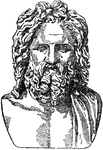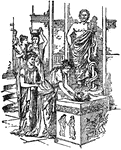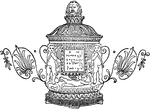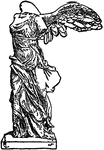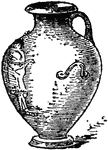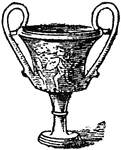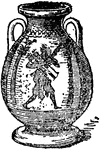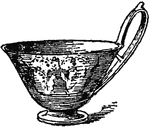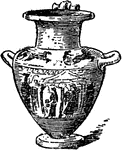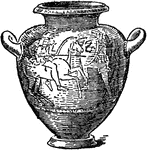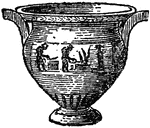
Abacus
An abacus is denoted primarily a square tablet of any description, and was hence employed in the following…
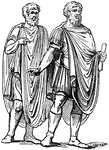
Abolla
A cloak chiefly worn by soldiers, and thus opposed to the toga, the garb of peace. The abolla was used…

Ancient Athens
"The mosted noted of the orations of Isocrates is the Panathenaicus or Panegyric of Athens, a work on…

Aeschines
"Aeschines owes the perpetuity of his fame to the fact he was the only rival of Demosthenes. He was…

Demosthenes
"In the oratory of more thn two thousand years Demosthenes stands in the front rank, and will always…
Amphitheatrum
"An amphitheatre was a place for the exhibitions of public shows of combatants and wild beasts, entirely…

Alcaeus
"Besides Sappho, her friend, perhaps lover, Alcaeus is almost the sole representative of the Aeolic…

Anacreon
"Though Anacreon has been famous as the poet of wine and love, few geniune fragments of his songs have…

Theocritus
"The fame of Theocritus, the prince of bucolic poetry, depends on his faithful pictures of natural scenery…

Polyphemus
"Theocritus asserts that there is no rememdy for Love but the Muses. He then gives an account of the…
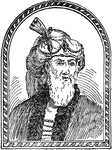
Flavius Josephus
"Flavius Josephus was a strange amalgamation of Jew, Greek, and Roman, admittedly not what he should…
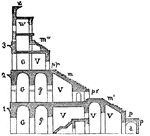
Amphitheatrum
"An amphitheatre was a place for the exhibitions of public shows of combatants and wild beasts, entirely…

Plutarch
"Plutarch, as the great interpreter of Greece and Rome, exerted on generations succeeding him in influence…

Amphorae
"A vessel used for holding wine, oil, honey. The following cut represents amphorae in the British Museum.…
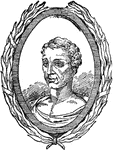
Lucian
"Lucian, the humorous satirist, was a native of Samosata, in Syria, and flourished towards the end of…
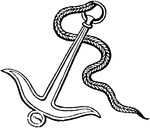
Ancora
"An Anchor. The anchor used by the ancients was for the most part made of iron, and its form resembled…

Byzantine court
"Constantine, the first Christian emperor, removed the capital of the world-empire from Rome to Byzantium,…

Julian
"Thus the prince, both when present and when coming, was alike victorius: and these things he achieved…
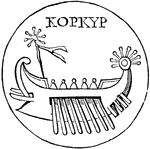
Aphractus
"Called also navis aperta, a ship which had no deck but was merely covered with planks in the front…
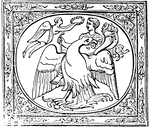
Apotheosis
"The enrollment of a mortal among the gods. The mythology of Greece contains numerous instances of the…

Aratrum
"A plough. Among the Greek and Romans the three most essential parts of the plough were-the plough tail,…

Aratrum
"A plough. Among the Greek and Romans the three most essential parts of the plough were-the plough tail,…

Arma
"Homer describes in various passages an entire suit of armour, and we observe that it consisted of the…

Arma
"Homer describes in various passages an entire suit of armour, and we observe that it consisted of the…

Aurum
"Gold appears not to have been coined at Athens till the time of the Macedonian empire, with the exception…
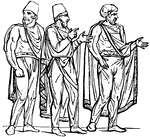
Bracae
"Trowsers, pantaloons, were common to all the nations which encircled the Greek and Roman population,…
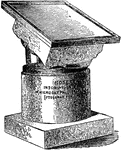
Rosetta Stone
"Rosetta Stone is the name given to a stone found near the Rosetta mouth of the Nile by a French engineer…

Sarcophagus of Scipio
"Sarcophagus, plural Sarcophagi, is a kind of stone used among the Greeks for making coffins, and so…

Sphinx
"Sphinx is a Greek word signifying 'strangler,' applied to certain symbolical forms of Egyptian origin,…
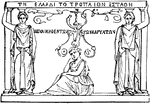
Caryatides
"Caryae was a city in Arcadia, near the Laconian border, the inhabitants of which joined the Persians…
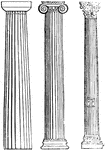
Columna
"A pillar or column. The use of the trunks of trees placed upright for supporting buildings, unquestionably…

Cyathus
"A Greek and Roman liquid measure, containing one-twelfth of the sextarius, or .0825 of a pint English.…

Drachma
"The principal silver coin among the Greeks. The two chief standards in the currencies of the Greek…

Drachma
"The principal silver coin among the Greeks. The two chief standards in the currencies of the Greek…

Fastigium
"An ancient Greek or Roman temple, of rectangular construction, is terminated at its upper extremity…





